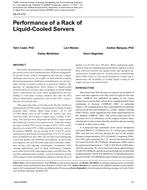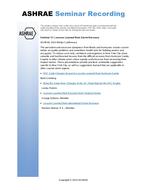The reliability of many industrial operations — and end product quality — make the drying of a variety of gases, including “inert” gas, nitrogen, hydrogen, oxygen, freon, etc., a continuing necessity. Consequently, the degree of drying (i.e., removal of water vapor) will depend on the industrial processes for which the gas is used or the physical/chemical qualities of the end product. The most common of all industrial gases — a gas used in practically all manufacturing plants or industrial process — is compressed air. Compressed air is so widely used, it is considered a utility for transmitting power to pneumatic instruments, controllers, tools, etc. The dependable operation of these essential industrial “tools” make drying of compressed air essential.
Since the basic principles of drying are identical for any of the gases mentioned above (and many others), these methods will be discussed in sequence using a typical compressed-air drying installation, as indicated in Fig. 1; i.e., compression, cooling (air, water, or refrigeration) and finally desiccation (either liquid or solid desiccant).
Citation: ASHRAE Transactions, Volume 81, Part 1, Atlantic City, NJ
Product Details
- Published:
- 1975
- Number of Pages:
- 8
- File Size:
- 1 file , 490 KB
- Product Code(s):
- D-AC-75-03-5


